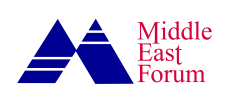Water and power outages in Iran continue without a resolution in sight. This is a result of decades of bad policy compounded by political corruption, and it could trigger another uprising. If that becomes the case, it will be the most serious internal challenge the regime has faced.
Iran’s dam industry has destroyed Iran’s water infrastructure. Mardo Soghom, a journalist and editorial manager at Radio Free Europe/Radio Liberty for three decades, wrote about the policy reasons behind it. Just as important, though, are the political interests that drove the Iranian government’s disastrous policy.
For decades, Iranian officials viewed building dams as a win-win strategy.
For decades, Iranian officials viewed building dams as a win-win strategy. Influential people and clerics from Iran’s dry heartland lobbied to redirect water to their towns and villages. The Islamic Revolutionary Guard Corps supported them because it received the major construction contracts; it also developed its capabilities to win dam projects abroad. Iranian state media routinely called Iran “the world’s leading country in the dam industry.”
For the last decade, the costs of this policy have been obvious. Following the operation of the Gotvand Dam in 2012, the Karun River’s salt level went up, affecting wildlife, fishing, and farming. Rivers and lakes receded. Isafahan’s river, the Zayandeh-Rud, traversed by the seventeenth-century Si-o-se-pol Bridge, ran dry just over a decade ago. Lake Urmia has receded 90 percent; Iranians attribute numerous illnesses and cancers to the resulting salt flat. As water shortages grew, farmers dug wells, depleting groundwater and causing land subsidence; incidents went viral on social media.
When water shortages appeared to be natural, the government did not crack down on journalists and experts discussing the topic. With time, though, Iranians realized deprivations grew and recognized that the government’s poor stewardship and corruption were more to blame than drought. When the Gotvand Dam opened, the Iranian government said it would generate electricity and boost agriculture; in actually, it led to power outages and food shortages.
The Islamic Republic needs to maintain support from the 10 to 20 percent of Iranians who constitute its base.
The Islamic Republic needs to maintain support from the 10 to 20 percent of Iranians who constitute its base. At every crisis, it blames sanctions and outside plots or demonizes domestic opponents. If the current crisis leads to nationwide protests, the regime will fail to deflect responsibility; it cannot say the shortages surprised them, especially because its own officials discussed it openly for a decade before the crisis escalated sharply and state media censored the topic. Unlike the compulsory hijab—which affects only secular Iranians, since the religious wear it willingly—water and power outages do not discriminate. Whereas the discrepancy in values between the average Iranian and their clerical regime fueled previous protests but allowed the regime to divide and conquer, water and electricity are not a question of values but basic needs.
For decades, the clergy and the Islamic Revolutionary Guard Corps sought credit from the regime’s dam-building. Today, they cannot distance themselves from the disaster that policy has wrought. With Tehran running dry and blackouts increasing at the height of summer, Supreme Leader Ali Khamenei faces a major crisis just a month after losing a war that largely discredited him as a leader and weakened Iran’s apparatus of repression. Even regime supporters blame government incompetence and sympathize with the people. The Islamic Republic now faces a fiasco. The growing crack within the regime’s hardline base will mark the most difficult political crisis that Khamenei has ever faced.







